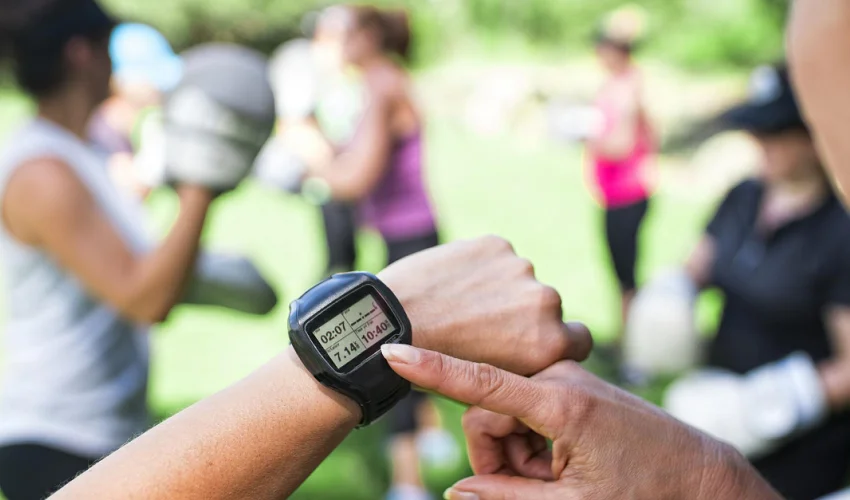Living with Type 2 diabetes requires careful management of blood sugar levels and overall health. One crucial aspect of managing this condition is incorporating physical activity into a weight management plan. By engaging in regular exercise and maintaining a healthy weight, individuals with Type 2 diabetes can improve their glycemic control, reduce the risk of complications, and enhance their overall well-being. In this article, we will explore the significance of physical activity in diabetes management, the benefits it offers, and practical strategies for integrating exercise into a weight management plan.
Understanding Type 2 Diabetes and Weight Management
What is Type 2 Diabetes
Type 2 diabetes is a chronic metabolic disorder characterized by insulin resistance and impaired insulin production. It affects the body’s ability to regulate blood sugar levels effectively. This condition is primarily influenced by genetic and lifestyle factors, including obesity, sedentary behavior, and poor dietary choices. Type 2 diabetes is a prevalent health issue worldwide, with significant implications for both individuals and healthcare systems.
The Link Between Type 2 Diabetes and Weight
Obesity and excess weight are significant risk factors for developing Type 2 diabetes. Adipose tissue, particularly visceral fat, produces hormones and inflammatory substances that contribute to insulin resistance and chronic inflammation, key factors in the development and progression of diabetes. Research has shown that weight loss plays a vital role in improving glycemic control, reducing the need for medication, and decreasing the risk of diabetes-related complications.
Benefits of Physical Activity for Type 2 Diabetes
Improved Blood Glucose Control
Engaging in physical activity helps regulate blood sugar levels by increasing insulin sensitivity and enhancing glucose uptake by muscles. Exercise stimulates glucose uptake even without the presence of insulin, making it an effective tool for managing diabetes. Regular physical activity can lead to better glycemic control, reduced HbA1c levels, and decreased reliance on diabetes medications.
Weight Loss and Maintenance
Physical activity is crucial for achieving and maintaining weight loss. By burning calories and building lean muscle mass, exercise helps create an energy deficit that promotes weight loss. Combining a healthy, balanced diet with regular physical activity supports sustainable weight management, reduces body fat, and decreases the risk of obesity-related health complications.
Cardiovascular Health and Metabolic Syndrome
Type 2 diabetes is associated with an increased risk of cardiovascular disease. Engaging in aerobic exercise, such as brisk walking, swimming, or cycling, improves cardiovascular health by reducing blood pressure, improving blood lipid profiles, and enhancing overall heart function. Regular physical activity also reduces the risk of metabolic syndrome, a cluster of conditions including high blood pressure, abnormal cholesterol levels, excess abdominal fat, and insulin resistance.
Table: Benefits of Physical Activity for Type 2 Diabetes
| Benefit | Description |
|---|---|
| Improved Blood Glucose Control | Regular physical activity enhances insulin sensitivity, helps regulate blood sugar levels, and reduces HbA1c levels. |
| Weight Loss and Maintenance | Engaging in exercise promotes weight loss, reduces body fat, and aids in maintaining a healthy weight. |
| Cardiovascular Health | Physical activity improves cardiovascular fitness, lowers blood pressure, and reduces the risk of heart disease. |
| Enhanced Insulin Sensitivity | Exercise reduces insulin resistance and improves the body's ability to utilize insulin efficiently. |
| Reduced Risk of Complications | Regular physical activity decreases the risk of diabetes-related complications, such as cardiovascular disease and neuropathy. |
Designing an Effective Physical Activity Plan
Consultation with Healthcare Professionals
Before starting an exercise routine, it is crucial to consult with healthcare professionals experienced in diabetes management. They can evaluate individual health status, provide tailored recommendations, and address any specific considerations or limitations. Working with a healthcare team ensures that the physical activity plan aligns with personal needs and goals.
Types of Physical Activity
A well-rounded exercise plan for individuals with Type 2 diabetes includes aerobic exercise, strength training, and flexibility exercises. Aerobic activities, such as walking, swimming, or dancing, improve cardiovascular fitness and burn calories. Strength training, involving exercises with weights or resistance bands, helps build lean muscle mass and increase metabolism. Flexibility exercises, such as stretching or yoga, enhance joint mobility and overall flexibility.
Duration and Frequency of Exercise
The American Diabetes Association recommends at least 150 minutes of moderate-intensity aerobic exercise per week, spread across most days. Alternatively, 75 minutes of vigorous-intensity aerobic exercise per week is also beneficial. Strength training exercises should be performed two or three times a week, targeting major muscle groups. It is important to start gradually and progressively increase exercise duration and intensity to avoid overexertion and injury.
Overcoming Barriers and Challenges
Addressing Motivation and Barriers to Exercise
Maintaining motivation to engage in physical activity can be challenging. Identifying personal obstacles, such as lack of time, energy, or confidence, is the first step in overcoming them. Setting realistic goals, finding enjoyable activities, and enlisting the support of friends or family members can boost motivation. Breaking exercise into shorter sessions throughout the day or incorporating it into daily routines, such as walking during lunch breaks, can also help overcome barriers.
Safety Considerations
Individuals with diabetes should be aware of potential complications during physical activity, such as hypoglycemia or hyperglycemia. It is essential to monitor blood sugar levels before, during, and after exercise and adjust food intake or medication as needed. Carrying a source of fast-acting glucose, such as fruit juice or glucose tablets, is recommended. Symptoms like dizziness, extreme fatigue, or chest pain during exercise should be promptly reported to healthcare professionals.
Lifestyle Modifications to Support Physical Activity
Healthy Eating Habits
Adopting a well-balanced diet is essential for diabetes management and supporting physical activity. Focus on whole foods, including fruits, vegetables, whole grains, lean proteins, and healthy fats. Limit the intake of processed foods, sugary beverages, and foods high in saturated and trans fats. Eating regular meals and snacks that include carbohydrates, proteins, and fats helps maintain stable blood sugar levels and provides sustained energy for physical activity.
Sleep and Stress Management
Adequate sleep is essential for overall health and diabetes management. Aim for seven to nine hours of quality sleep each night. Additionally, managing stress levels is crucial as stress can affect blood sugar control. Engage in stress reduction techniques such as deep breathing exercises, meditation, or engaging in hobbies or activities that bring joy and relaxation.
Monitoring Progress and Adjusting the Plan
Self-Monitoring of Blood Glucose
Regular self-monitoring of blood glucose levels helps individuals understand how physical activity affects their blood sugar control. Monitoring before, during, and after exercise allows for adjustments in medication, food intake, or exercise intensity if needed. Blood glucose meters and continuous glucose monitoring systems are valuable tools for tracking blood sugar levels.
Regular Follow-ups with Healthcare Professionals
Regular follow-ups with healthcare professionals are essential to monitor progress, adjust the exercise plan, and address any concerns. Healthcare providers can provide guidance on modifying exercise routines, offer support and encouragement, and ensure that overall diabetes management remains optimal.
Incorporating physical activity into a weight management plan is crucial for individuals with Type 2 diabetes. Regular exercise offers numerous benefits, including improved blood glucose control, weight loss and maintenance, cardiovascular health, and overall well-being. By designing an effective physical activity plan, overcoming barriers, and adopting a healthy lifestyle, individuals can take control of their diabetes management and enhance their quality of life.




